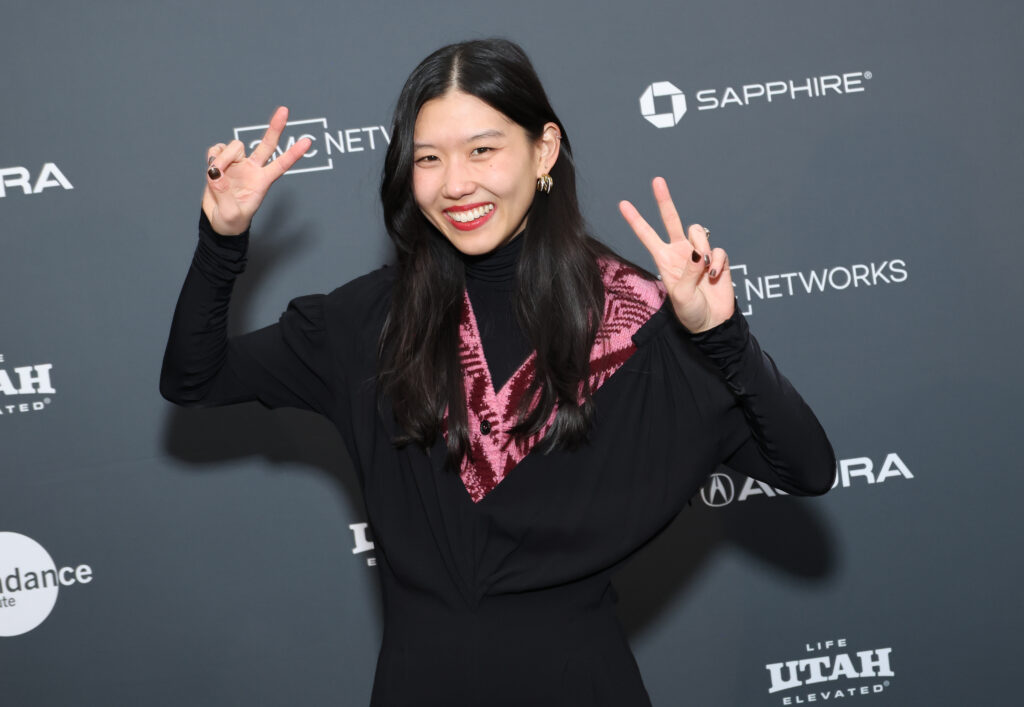PARK CITY, UTAH – JANUARY 22: Director Amanda Kim attends the 2023 Sundance Film Festival “Nam June Paik: Moon Is the Oldest TV” premiere at Library Center Theatre on January 22, 2023, in Park City, Utah. (Photo by Amy Sussman/Getty Images)
By Peter Jones
Nam June Paik was an artist well ahead of his time. As he earnestly threw his ideas at the wall — literally and figuratively — to see what would stick, he set the stage for everything from MTV to YouTube. The Korean-born avant-garde conceptualist used the portable video camera — as well as pianos, TVs, and anything else he could get his hands on — in ways few had imagined.
“I use technology in order to hate it properly,” said the late artist, who coined the term “information superhighway” back when the internet was but a gleam in technology’s eye.
A new documentary, Nam June Paik: Moon Is the Oldest TV, which premiered January 22 at the 2023 Sundance Film Festival, is a revealing portrait of an artist with few, if any, creative filters. His iconoclastic art defied convention, be it in classical music, television, patriotism or even the sacred Buddhism of his native country. While many in the experimental arts communities of the 1960s embraced Paik’s work, others were confounded, irritated or offended.
For director Amanda Kim, her biographical film was a labor of love and exploration, as she told the audience after the screening.
“I went into an internet cave of sorts and started finding weird archives and people who know [Paik] and called them up,” she says of the project’s genesis.
What Kim discovered in those multitude of phone conversations and coffee appointments was a “crazy” life that was hard to condense into one movie.
“He’s not very easily definable as just a video artist,” she says of Paik. “He’s not easy to categorize, which is what I love about him… He’s always evading definition. That was incredibly difficult to edit… How do you let the story flow while still making it understandable for people who don’t know anything about him?”
As the documentary shows, Paik was earnestly seeking a platform for his self-styled ideas when he stumbled upon the groundbreaking avant-garde musician John Cage, who effectively gave Paik license to fully cut loose with his random, cut-and-paste sensibilities.
“I’d rather fail with a purpose than succeed for no reason,” Paik once said.
The artist was likely the first to fuse classical music with striptease or distort television images with a magnet as a comment on the public’s addiction to banality.
“I think what’s really interesting about Nam June is [he knew] humor is a great way to get people to listen in a different way. It’s a tool to make sure the message is communicated,” Kim says.
Paik held firm on the portable video recorder as an instrument of democracy, or a great equalizer, years before YouTube turned everyone and his grandmother into a star.
“He’s speaking to our generation,” Kim says of the forward-thinking artist who died more than a decade ago. “His ideas were actually very contemporary.”
Much of Paik’s trailblazing work was later echoed in music videos by Talking Heads, Prince and others — a double-edged sword for an artist who seemed to have little use for that sort of “stargazing.”
“The moon is the oldest TV,” Paik said, noting that people had stared at the moon for thousands of years before gaping into the eyes of a television.










